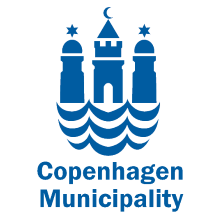The Danish capital plans to increase blue and green infrastructure city-wide to withstand more frequent cloudbursts in the future.
Acknowledging future risks of increased stormwater volumes and more frequent cloudbursts – including a severe event in 2011 that resulted in more than $910 million in repairs – the Copenhagen City Council adopted a Cloudburst Management Plan in 2012. The city is preparing a full-scale rollout of 300 cloudburst projects over the coming 20 years, and has drafted plans for seven cloudburst catchment areas dispersed throughout the city, designed to increase the city’s blue and green infrastructure and prevent flooding.
The green infrastructure, in the form of parks and natural areas, will absorb rainwater for storage and managed seepage, while water-transporting boulevards will funnel excess water away from inundated areas. These actions address not only cloudburst events but also urban heat island issues. The 300 cloudburst projects that combine green surface and sewer-based solutions will not only retain and drain water and protect the entire city against a 100-year rainfall, but also represent a good business case as they result in an estimated overall benefit of $767 million. The property market is expected to respond positively to the certainty associated with a climate adapted city.
40,000 cubic meters of water can be contained in just one park during cloudbursts
The challenge
Faced with stormwater volumes increasing by up to 40%, and the risk of stronger and more frequent downpours rising by up to 55%, Copenhagen decided to prepare a comprehensive cloudburst plan. With an expected monetary gain, the city proves that a climate adapted city also makes economic sense.
Co-benefits
Economic The damage from stormwater and heavy rains is calculated to cost up to $3 billion over a period of 100 years in Copenhagen, which the city reduces with the Cloudburst Management Plan.
Environmental The city’s green infrastructure has many functions, such as creating shade and air circulation, which assists in reducing the energy Copenhagen uses to cool buildings.
Health Some of the benefits to the Cloudburst Management Plan include remediation and reduction of air and noise pollution in the bustling Danish capital.
Social The city’s green infrastructure provides opportunities for recreation and stress prevention, which maintains a high quality of life for Copenhagen residents.
About Copenhagen
Copenhagen is the capital and most populous city of Denmark. The city has a population of 763,908 (as of December 2016), of whom 601,448 live in the Municipality of Copenhagen. Copenhagen is situated on the eastern coast of the island of Zealand; another small portion of the city is located on Amager, and is separated from Malmö, Sweden, by the strait of Øresund. Originally a Viking fishing village founded in the 10th century, Copenhagen became the capital of Denmark in the early 15th century. Since the turn of the 21st century, Copenhagen has seen strong urban and cultural development, facilitated by investment in its institutions and infrastructure. Copenhagen’s economy has seen rapid developments in the service sector, especially through initiatives in information technology, pharmaceuticals and clean technology.


